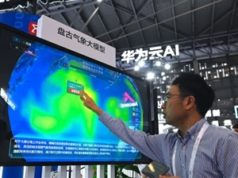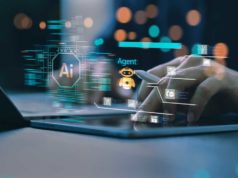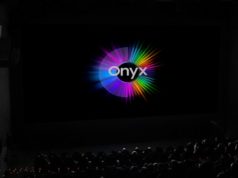It’s that time of year where I typically publish my predictions for 2017. To be honest, most of the predictions that I usually talk about are pretty close to commercialization, so it is really less a “prediction,” and more about letting everyone know about the various technical advancements getting ready to hit the mainstream market to which I just happen to be privy.
This year, I’m going to try something new. I’m going to write a little sci-fi (or is it really science non-fiction?) about what the cloud may be 10 years from now. Ten years in technology is getting harder and harder to imagine as leaps between technical advancements continue to grow at an astounding pace. There are still signs of what will come: companies large and small are harnessing the mass computing power of the cloud, not just to deliver cute cat videos on demand to your phones, but to optimize everything — even work that only humans can do now.
Welcome to the year 2026.
People are still a little hesitant to get into self-driving cars, not because of the AI, but because human drivers are still on the road and the mix of human and machine drivers is a scary combination. Google and Uber are suffering from a huge public backlash after it leaked that they were applying to the FAA for an AI controlled 747 for the purposes of carrying freight. Along with Apple, Microsoft, and Amazon, they are racing to control all the public transportation across the world; buses, vans, taxis, trains — all fully autonomous. It has been estimated that 10 million transportation-related jobs will be permanently displaced.
Responding to bad publicity, the major cloud providers keep a low profile by applying their AI systems internally vs. solving external issues; finding the best staff, tuning data centers, reducing power consumption, and reprogramming computer chips for optimal performance are all on the agenda. In each of the 5 years since starting these initiatives, major cloud providers have been able to reduce their operating costs by 50 percent, crushing all companies that refused to invest in cloud tech and laying waste to whole sectors of the economy. Just as US companies that were slow to adopt outsourced manufacturing faded, those companies that didn’t have large cloud-based abilities can’t compete. As cloud systems get faster from self-tuning, cloud providers dedicate more and more of their internal computing resources to AI.
Now cloud companies quietly fund other companies via their mega-investment funds. Americans are so happy that their health care costs are finally decreasing that they fail to notice that they no longer personally know anyone who is a doctor. cloud-based systems analyze blood for early signs of disease, X-rays for signs of cancer, any many other common ailments. All of this analysis is multiple times more accurate than any humans could ever hope to achieve.
Not fully aware of what is happening, government officials try to put in place laws and programs designed to protect employees, but they backfire because the real change that is occurring is that AI and robotics are finally coming to age and, dare I say, actually working as we thought they would 20 years ago. It’s the Luddites all over again but on a massive scale across all industries. Universities and Silicon Valley try to react by creating rapidly changing courses, but, with entire industries in constant flux, it’s hard for workers to adapt to the ever changing demands, just as it is currently difficult for some to adapt to a new smartphone every two years.
It takes some time, but people and whole societies start to accept the increasing rate of change, automation, and AI. Deep down we know that humans have always had the power to create and to destroy, so just like nuclear power we learn the live with the risks and harness the good of this technology. And humans do what they do best — adapt.
This article is published as part of the IDG Contributor Network. Want to Join?







